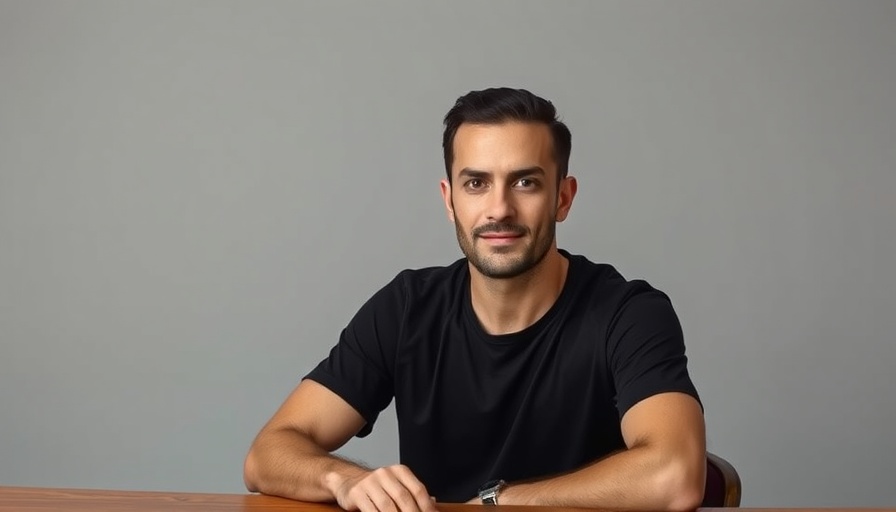
Trump’s Landmark $100,000 H-1B Visa Fee: What You Need to Know
Starting September 21, 2025, obtaining an H-1B visa in the U.S. will come with a hefty price tag of $100,000, raising important questions about the future of skilled labor in America. In the eyes of supporters, this bold initiative aims to prioritize American jobs while ensuring only the most valuable foreign workers gain access to U.S. positions of expertise. Critics, however, fear this significant change could stifle innovation and lead to a talent exodus, particularly among Indian professionals who historically dominate the H-1B landscape.
In "Trump's $100,000 Fee for H-1B Visas | H1B Visa Fees in 2025", the discussion dives into the implications of this new fee, exploring key insights that sparked deeper analysis on our end.
The H-1B Visa Landscape: A Balance of Talent and Security
First, let’s understand the H-1B visa system. Designed to attract foreign workers with specialized skills in industries like technology, healthcare, and engineering, the program offers a three-year visa that can be extended to six years, with many visa holders using it as a pathway to permanent residency. The recent increase in application fees raises the stakes involved in hiring foreign talent, prompting companies to consider whether the benefits of bringing in international workers outweigh the financial burden of the new fee.
Implications for Overseas Talent
The new fee mostly targets new visa applicants. It won’t affect renewals or extensions, which is a relief for current H-1B holders. However, the fee doesn’t just pose a challenge to potential skilled immigrants; it puts immense pressure on U.S. enterprises). Small businesses, often the lifeblood for innovation, may struggle under these costs, potentially hampering their ability to compete in a global market.
The Perspective of Tech Giants: Who Benefits?
Supporters from the tech industry see a silver lining in these changes, arguing it will filter out less qualified candidates and focus resources on securing top-tier talent for advanced positions. Elon Musk, among others, has expressed support for the change, emphasizing the need for the U.S. to retain its edge as a global tech leader. However, prominent companies like Amazon and Microsoft have been notably silent, raising questions about the broader industry consensus and the effects this fee might enact on technological advancement.
The Ripple Effect: Economic Growth vs. Job Security
Economists are warning that this fee could set off a chain reaction in the economy. While the intent is to bolster American jobs, the potential fallout could cause foreign professionals to reconsider their options, which may unintentionally prompt a brain drain of skills to countries with more favorable policies. The risk is real—decisions based on cost alone could push American companies to offshore tasks that were once performed domestically, thereby threatening job security for both foreign and American workers.
Addressing Common Misunderstandings: Who is Affected?
Many prospective applicants might wonder if the fee is mandatory for every situation. It's crucial to clarify: the $100,000 fee applies only to new applications submitted post-September 21, 2025. If you're already in the U.S. holding an H-1B or renewing your status, you won’t have to pay this fee. This provision provides some reprieve but also creates a convoluted landscape for individuals who are switching statuses from student to work visas or changing employers within the system.
The Future: What’s Next for Aspirants?
For many foreign professionals, especially those from India who represented over 70% of last year’s H-1B visa approvals, the new restrictions represent not just a financial hurdle but also a life-altering decision. As we move closer to 2025, potential applicants, especially the younger, tech-savvy crowd, need to weigh if they’re willing to bear this cost, or consider other countries that might offer more accessible opportunities.
Conclusion: Shaping the Future of Skilled Immigration
The imposing $100,000 fee for H-1B visas not only changes the dynamics for foreign workers seeking to contribute their expertise to the American economy but also influences how U.S. companies approach hiring. As the landscape evolves, stakeholders must engage in dialogue about how best to balance the needs of American workers with the benefits of global talent. In this shifting environment, staying informed is crucial, as is preparation to navigate a new world of immigration policy influenced by economic priorities.
If you’re a professional eyeing a career in the U.S. or a company trying to fill positions, now is the time to explore options. Knowledge is power, and understanding these changes will better equip you to adapt to the shifting world of H-1B visa regulations.
 Add Row
Add Row  Add
Add 




Write A Comment